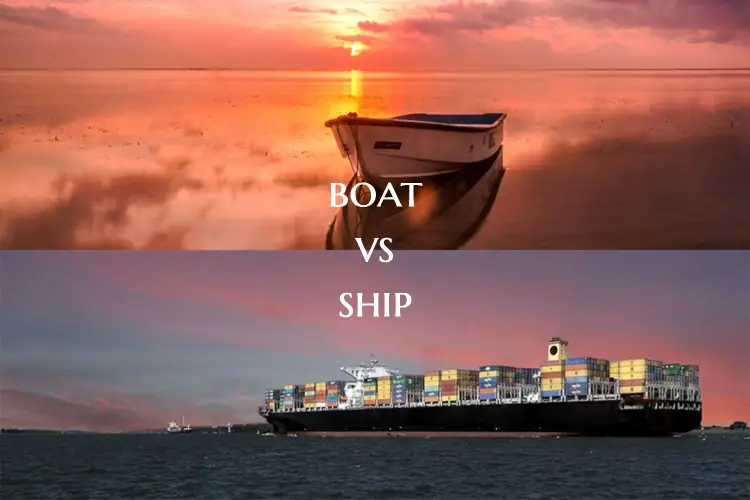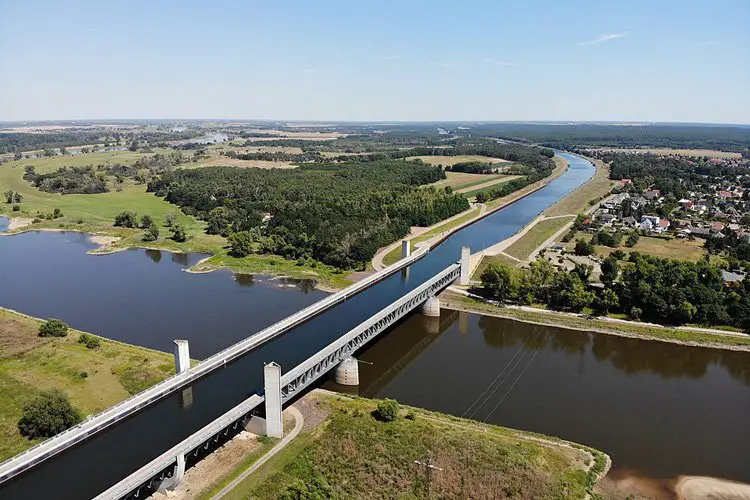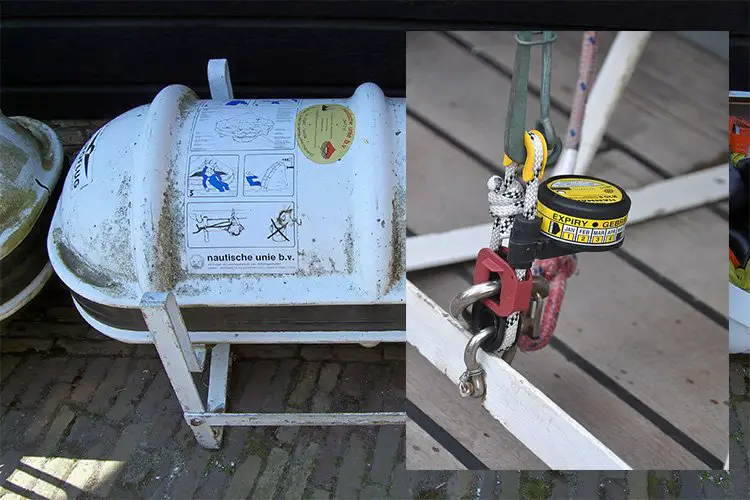Top 15 Ports in Italy
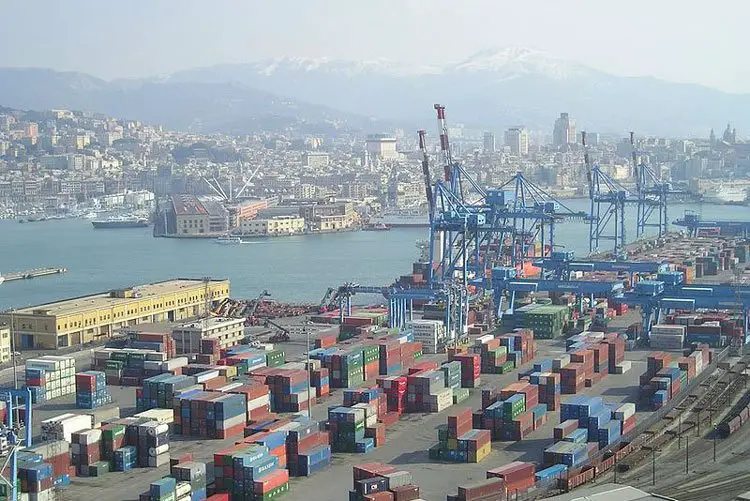
Italy has played an important role in marine trade since antiquity, owing to its unique topography. In earlier times, ports in Italy like Genoa, Venice, Pisa, and Amalfi competed for dominance of trade routes along the Mediterranean Sea throughout the Middle Ages and Renaissance.
While they eventually fell victim to the rise of Atlantic trade and other circumstances, they cleared the way for the seafaring European nations that followed.
Italy is still a major maritime hub in the Mediterranean, with high-capacity ports managed primarily by public port authorities established under the 1994 Port Reform Law.
We begin with a description of different types of ports and categories of goods handled in this article so that we may better understand how to evaluate each port’s performance and construct a single overall ranking.
The quantity of tonnage that passes through a commercial port each year is perhaps the most obvious metric for determining its size. It is the standard by which the nation’s and world’s largest ports are ranked. However, this isn’t the only option.
In many circumstances, the number of Twenty-Foot Equivalent Units (TEUs) passing through a port’s docks is more important than the amount of tonnage. The typical size of ISO containers is a TEU, which is 20 feet long (just over 6 meters) and has an exterior volume of 1,360 cubic volumes, or 38.5 cubic meters.
The major ports can be ranked based on both annual tonnes and the number of TEUs that pass through them each year. The TEU is a typical abbreviation for the world’s major ports.
When we look at container traffic and the number of TEUs handled in 2019, the rankings of the most important Italian ports change considerably. In this list, Genoa comes in #1, followed by Gioia Tauro. Both ports handled more than 2.5 million TEUs in 2019, albeit with substantial variances.
Also read: Outer Port Limit: Definition & Importance
When defining the ranking of the 15 major Italian ports, the number of tonnes that pass through each port each year is taken into account.
At the level of medium-sized ports, this figure is more important. Assoporti relies on and releases data that is current as of 2018. So, let’s see which of Italy’s ports is the most important.
List of Ports in Italy
| Sl. No. | Port Name |
|---|---|
| 1. | Port of Trieste (ITTRS) |
| 2. | Port of Genoa (ITGOA) |
| 3. | Port of Livorno (ITLIV) |
| 4. | Port of Cagliari (ITCAG) |
| 5. | Port of Gioia Tauro (ITGIT) |
| 6. | Port of Ravenna (ITRAN) |
| 7. | Port of Venice (ITVCE) |
| 8. | Port of Messina (ITMSN) |
| 9. | Port of Augusta (ITAUG) |
| 10. | Port of Taranto (ITTAR) |
| 11. | Port of Naples (ITNAP) |
| 12. | Port of La Spezia (ITSPE) |
| 13. | Port of Salerno (ITSAL) |
| 14. | Port of Savona (ITSVN) |
| 15. | Port of Civitavecchia (ITCVV) |
1) Port of Trieste
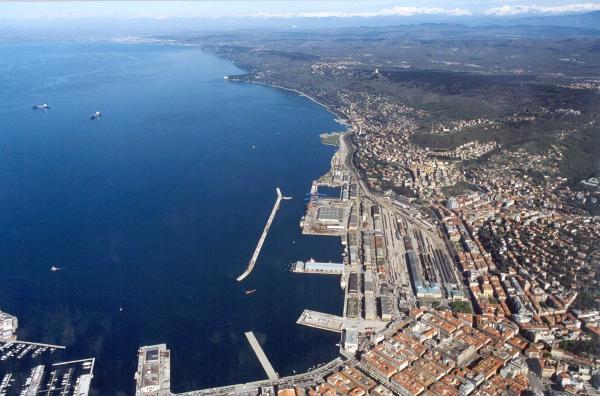
The Free Port of Trieste is a port in Trieste, Italy, on the Adriatic Sea. It is separated into five different Free Areas, three of which are designated for commercial purposes. The Mineral Oils Free Area and the “Canale di Zaule” Free Area, the two remaining areas, are used for industrial purposes.
With a total of 62.68 million tonnes of commodities transported each year, Trieste is at the top in freight traffic. The formal history of this Adriatic port dates back to 1719 when the Emperor of the Holy Roman Empire granted it a free port.
With the construction of the Suez Canal, the prominence of this commercial port skyrocketed. As a result, the port’s facilities were expanded.
The port became a free port in 1891, and it was enclosed from the rest of the town. The free port status, which had previously been extended to the entire city, was now restricted to this region, and the city was physically divided from it.
Between 1901 and 1914, work on the Rive region (the embankment), the Bersaglieri Wharf, the Scalo Legnami (the timber pier), and the S. Andrea port started (piers V and VI).
Between 1924 and 1936, the fourth era is marked by the completion of major public works projects, including the completion of marine infrastructures, port equipment on piers V and VI, the Silo, the Stazione Marittima (passenger station), and the Idroscalo (the air harbor).
Following the reconstruction of structures devastated by WWII bombings, an innovative port reorganization was launched to meet the needs of containerization and modern transportation networks.
2) Port of Genoa

The port of Genoa, another historic port on the Italian peninsula, is ranked second in the ranking of the 15 largest Italian ports. In 2014, 54.26 million tonnes of commodities were transported through it.
It is the largest Italian port, with 700 square meters of land surface area and 500 square meters of water surface area. The Port of Genoa is Italy’s main seaport, competing with Marseille and Barcelona on the Mediterranean Sea. With a trading volume of 51.6 million tonnes, it is Italy’s busiest port in terms of cargo tonnage.
The passenger terminal quays cover a total area of 250 thousand square meters, with 5 cruise ship berths and 13 ferry berths, with an annual capacity of 4 million ferry passengers, 1.5 million automobiles, and 250,000 trucks.
The medieval marine station at Ponte dei Mille is now a technologically advanced cruise terminal, with facilities modeled after the world’s most modern airports, to ensure quick embarking and disembarking of the world’s most modern ships transporting thousands of people.
In the reconstructed area of Ponte Parodi, which was originally a grain dock, a third cruise terminal is currently under construction.
Also read: Major Ports in China
3) Port of Livorno
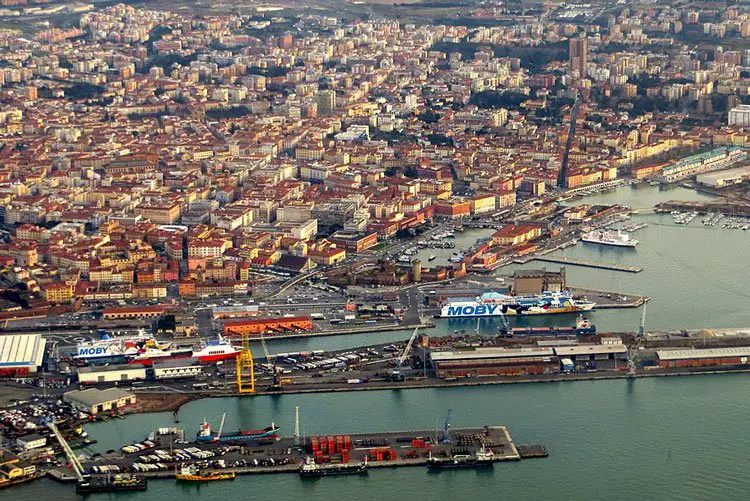
With an annual traffic capacity of roughly 30 million tonnes of cargo and 600,000 TEUs, the Port of Livorno is one of the major seaports in Italy and one of the largest seaports in the Mediterranean Sea.
With more than 15,000 employees and more than 7,000 ships passing through each year, the port is a major employer in the area.
Livorno’s port is a large Italian port on the Tyrrhenian Sea Corridor, capable of receiving a wide range of vessels (LoLo, RoRo, liquid bulk, dry bulk, cruise ships, ferryboats). The port primarily serves the Italian regions of Tuscany, Emilia-Romagna, Umbria, and Marche.
4) Port of Cagliari
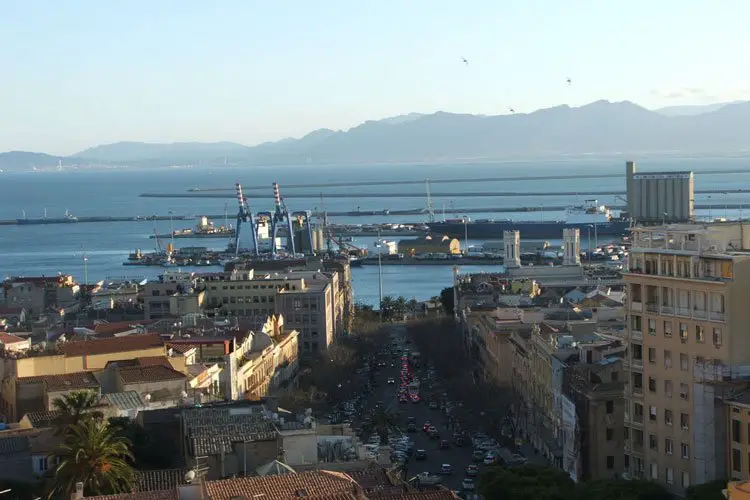
The Port of Cagliari is one of the major Italian seaports, as well as one of the largest seaports in the Mediterranean Sea basin, with an annual traffic capacity of around 50 million tonnes of cargo and 1,000,000 TEUs.
The Port of Cagliari, an ancient Punic and then Roman port, handles 35.92 million tonnes per year, similar to the volumes handled by the Port of Livorno (it is not by chance that in 2017 it was in third place among the largest Italian ports).
Cagliari, Sardinia’s main city and home to one of the Mediterranean Sea’s largest container terminals, is located on the island’s southern coast. The grain and sugar processing industries, as well as cement and ceramics manufacture, are all supported by the surrounding industry.
The Port of Cagliari, located 18 kilometers from the Gibraltar-Suez ideal line, is one of the major transshipment hubs in the Western Mediterranean.
The Cagliari Port Authority’s territorial jurisdiction covers approximately 30 kilometers of coastline and is separated into two areas: the ancient port and the canal port.
The ancient port features a 5,800-meter quay that supports commercial, Ro-Ro, and passenger ship traffic. The canal port has a quay length of 1,600 meters and five ports for transshipment and Ro-Ro traffic.
These two ports are flanked by petrochemical and oil industry facilities that can accommodate 17 ships at a time. The Port of Cagliari, located 18 kilometers from the Gibraltar-Suez ideal line, is one of the major transshipment hubs in the Western Mediterranean.
The petrochemical and oil industries are served with berths that can accommodate 17 ships at a time.
5) Port of Gioia Tauro
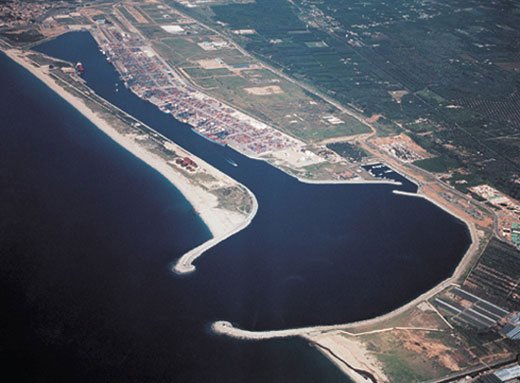
In southern Italy, the Port of Gioia Tauro is a significant seaport. It is Italy’s busiest container port, ranking ninth in Europe and sixth in the Mediterranean Sea. The port of Gioia Tauro is ranked fifth in this ranking of Italy’s major ports by annual tonnage.
If the ranking were based on the number of TEUs, the Calabrian facility would be ranked higher. If the port handled “only” 29.16 million tonnes of goods in 2018, it handled 2.32 million TEUs in the same year, compared to 725,000 TEUs in Trieste and 2.6 million TEUs in Genoa.
It is uniquely adapted to serve Ultra Large Container Ships because it is primarily a transshipment center (ULCS). The port lies in the southern Italian province of Calabria, and it connects to the international shipping line that runs from the Suez Canal to the Strait of Gibraltar.
It takes advantage of its natural depth (up to 18 meters) and offers one of the longest linear quays in the Mediterranean (3.4 km).
Alongside its specialized equipment (22 Ship-to-Shore cranes reaching up to 23 rows of containers), these features make it possible for the port to simultaneously serve 4 Ultra Large Container Vessels, which are unique in Mediterranean ports.
The port’s output reached 3,467,772 TEU in 2008 and then decreased steadily between 2009 and 2011, reflecting the global economic crisis.
The volume of traffic in Gioia Tauro has increased between 2011 and 2013 but has fallen again between 2013 and 2015. The conditions of transshipment in the Mediterranean have been difficult and the competition from other major hubs in Greece, Egypt, and Malta has declined.
Also Read: Major Ports in Spain
6) Port of Ravenna
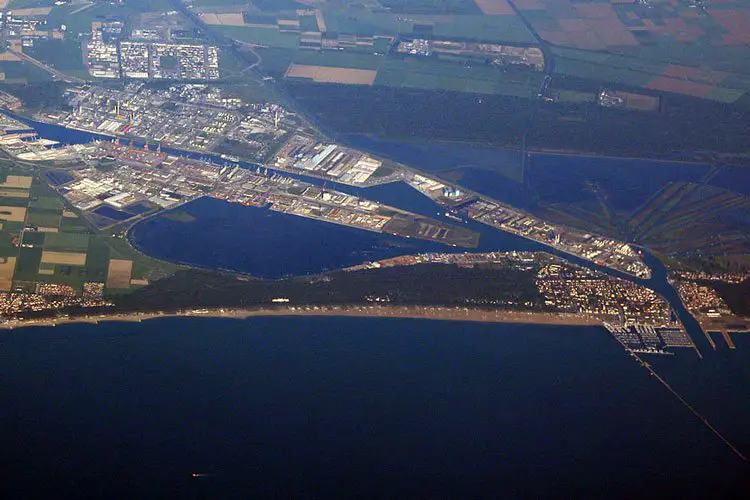
The Port of Ravenna is one of the main ports in Italy. This undisputed dominance has been achieved thanks to the quays, which span more than 12,5 kilometers and are exceedingly equipped with the most cutting-edge methods of loading and unloading, including cereal-suction pipes, jib, and mobile shore cranes, bridge-Cranes and transtainers, mechanical lifting systems, and screw loaders for bagged cargoes, among other yard means of handling.
Ravenna’s port is serviced by its own rail network. Port terminals are connected to various railway lines, ensuring a connection to the national rail network.
It has been around for thousands of years. The military and trade seaports of Ravenna are depicted on the opposite sides of S. Apollinare Nuovo, a Ravenna church erected by Theodoric the Great.
Emperor Augustus established the military harbor of Classe near Ravenna in 31 BC. It was home to the Roman Empire’s second imperial fleet (according to Vegetius, Epitome of Military Science fourth book – the first one was located in Portus Julius near Capo Miseno near the Port of Naples). Even after the fall of the Roman Empire in the 5th century, the port remained active and flourished during Byzantine domination, as evidenced by the mosaics.
After being swamped by river silt and conquered by Venice in the 15th century, it fell into disrepair. The Corsini Canal, which connects Ravenna to the sea and was named after Pope Clement XII, began operating in 1738.
During World War I, the United States Navy constructed a naval air station at Porto Corsini on July 24, 1918, to operate seaplanes. Shortly after the First Armistice in Compiègne, the base was closed.
A massive petrochemical facility was built after WWII, but the 1973 oil crisis strengthened its multipurpose trade facilities.
7) Port of Venice
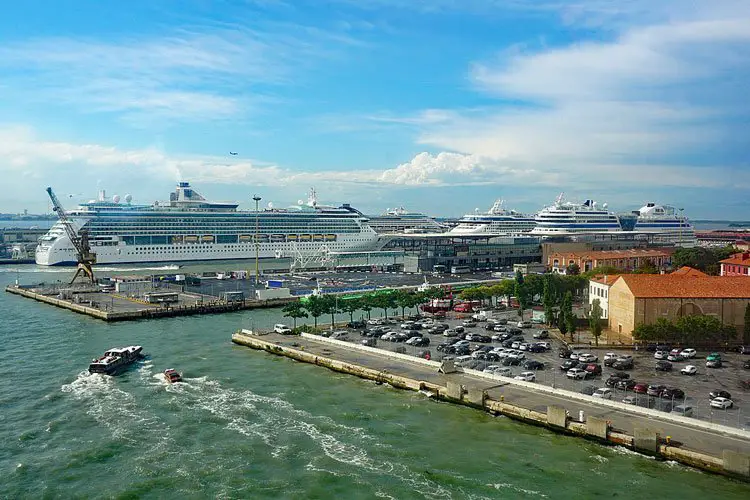
The Port of Venice is a port in northeastern Italy that serves Venice. It is Italy’s seventh busiest commercial port and one of the most important in the Mediterranean for the cruise industry, serving as a major cruise ship hub. Among the largest ports in the Mediterranean regarding the cruise sector, the Port of Venice is the seventh Italian port for cargo traffic, with 26.49 million tonnes per year.
8) Port of Messina
Messina Port is a port in Messina, Sicily, Italy. The port has seen a major increase in traffic in the twenty-first century, and is currently one of the largest and most important ports for cruise ships in the Mediterranean, with passenger numbers increasing from 260,000 in 2006 to 405,000 in 2009. Messina’s Port, which has remained nearly completely untouched over the years, preserving its natural form, is the widest berth in Sicily.
Though its importance as a commercial port has decreased, it used to accept and shelter vessels of all sizes from storms and rough seas. Despite the fact that it is no longer a trading port, it serves as a refueling station for seagoing vessels.
For generations, the city has been recognized as the gateway to Sicily, and its economy currently relies heavily on tourists visiting not only Messina but the entire island. According to Assoporti’s figures, 24.43 million tonnes of goods were transported between Messina and Milazzo.
The port is made up of a large natural harbor entrance that spans an area of approximately 820,000 m2 and is located on the western bank of the Strait of Messina. On the other hand, the port areas are just about 50 hectares in size.
The northwest harbor entrance is about 400 meters wide, and the basin’s average depth (about 100 meters from the docks) is 40 meters. This permits huge ships to dock and gain access. The docks are connected by rail through Messina Centrale and Messina Marittima railway stations and are equipped with both fixed and mobile cranes.
Also Read: Ports in India
9) Port of Augusta
The province of Syracuse includes the Port of Augusta, which is located in eastern Sicily. The operation of petrochemical and petroleum refining, as well as the manufacturing of unleaded gasoline, make it a major industrial port. It also serves as a military supply hub.
The port of Augusta is an important logistical center in the Mediterranean because of its position. The port of Augusta, in addition to being an important facility for the Italian Navy, saw a flow of 24.19 million tonnes of products in 2018.
Since ancient times, people have utilized the natural port. The Italian Navy did not develop the port and build a significant military post to exert coast control until the 1930s. The Royal Navy used the harbor for ten years during the conflict between Italy and Turkey, and it was often raided by the Allies during their arrival in Sicily. From 1943 to 1946, it was occupied by the British Navy.
The oil refinery Rasiom Moratti, established by oil entrepreneur Angelo Moratti in 1949, marked the start of the city’s history as a large-scale industrial harbor, currently part of the Augusta-Priolo petrochemical complex. The establishment of Sincat, a subsidiary of the Edison Group, which operated in the inorganic chemical and fertilizer sectors, the power plant Tifeo, and a slew of other companies like Liquigas, Ilgas, Sotis Cables, and Siciltubi ushered in a period of significant growth in the 1950s and early 1960s.
10) Port of Taranto
The Port of Taranto is a port in southeastern Italy that serves the city of Taranto. It is one of the earliest ports for goods trade in Italy, and it is located on the northern coast of the gulf, where it plays a vital commercial and geopolitical role. There are three entrances, two of which are active. It had a yearly output of 20.43 million tonnes of commodities. The container facility and the port of Taranto have their sights set on Turkey’s Yilport Holding AS.
11) Port of Naples
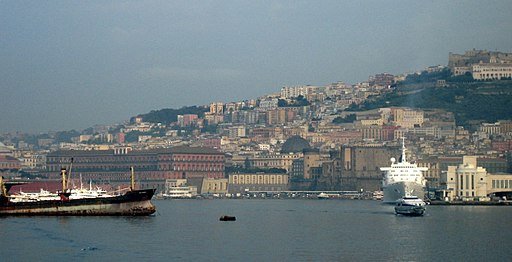
With an annual traffic capacity of roughly 25 million tonnes of cargo and 500,000 TEUs, the Port of Naples is one of the greatest Italian seaports and one of the largest seaports in the Mediterranean Sea basin.
It is one of the most historic ports in the Mediterranean Sea. It is a port that experiences heavy marine traffic on a daily basis, with huge cruise ships departing and arriving, numerous ferries to the islands of the Gulf of Naples (Ischia, Capri, and Procida), and a large number of hydrofoils bound for the beauty of the Sorrento Peninsula (Amalfi, Sorrento, Positano).
Food processing is also important to the local economy, with Neapolitan coffee cultivated here being shipped all over the world via the port of Naples.
The shipyards play a crucial role in the Port of Naples. Three brick-built docks and four floating docks make up the infrastructure of the port shipyards.
The industry consists of four large enterprises and 60 small workshops that perform ship repairs and employ a total of 2,000 people with a revenue of more than $200 million.
12) Port of La Spezia
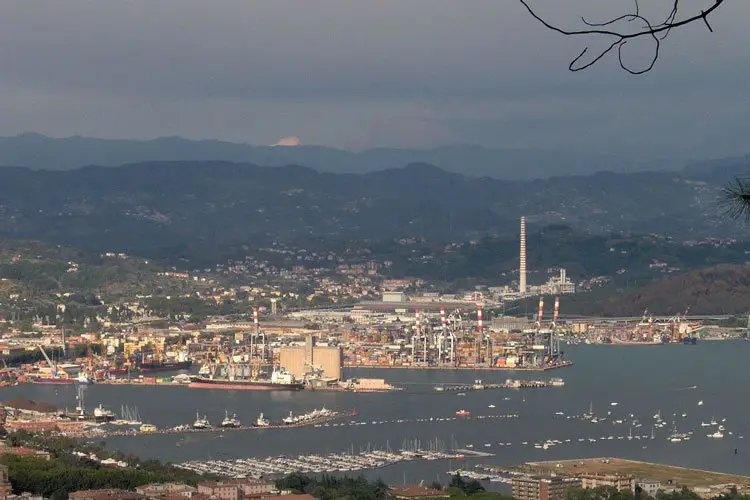
The port of La Spezia, on the coast between Genoa and Leghorn, serves the Padana Plain, Switzerland, Austria, and Bavaria markets. The port of La Spezia includes roughly 5 kilometers of quays and 575.00 square meters of surface area, as well as 17.000 meters of rail tracks and 3.500 meters of roads. It is located within a 150-hectare harbor and is protected by an outer barrier.
The port’s draught may reach 14 meters, allowing the newest container ships to dock; ongoing dredging projects will raise the draught to 15 meters. The terminals contain cranes with a capacity of up to 100 tonnes and covered warehouses with a total area of 13.000 square meters.
Two container terminals, one multipurpose terminal, one coal terminal, two oil terminals, one LNG terminal, and two cement terminals are all open for business in the port.
According to official data from 2017, the port of La Spezia was the second-largest Italian node in terms of TEU movement, trailing only the Port of Genoa, which moved 2.6 million TEUs annually out of a total of 10.5 million TEUs.
13) Port of Salerno
The Port of Salerno is a port in southwestern Italy that serves the city of Salerno. The port of Salerno, which is located in the Tyrrhenian Sea’s Gulf, is classified as a class II seaport.
The port of Salerno handled 14.91 million tonnes of cargo last year. The Port of Salerno is critical to the growth of commercial exchanges and the transportation infrastructure throughout central and southern Italy.
The Port of Salerno is widely regarded as one of Europe’s most efficient and dynamic ports.
14) Port of Savona
The port of Savona Vado is located in Liguria (northwestern Italy), in the Mediterranean Sea’s northernmost region, and is close to major European markets. Ligurian Ports, which comprises the neighboring ports of Genoa and La Spezia, includes Savona Vado.
Ligurian Ports is a vital economic corridor for the economy of Southern Europe and one of the most important port systems in the Mediterranean Sea.
Port terminals that are privately held can handle any form of cargo (containers, general cargo, dry and liquid bulk), as well as passengers (cruises and ferries). Liguria’s third commercial port, which has been in service since the Middle Ages, handled 14.89 million tonnes of cargo in 2018.
15) Port of Civitavecchia
The port of Rome is Civitavecchia, which is 80 kilometers north of Rome on the Tyrrhenian Sea. The port supports fishing, thermoelectric, and metallurgic businesses in addition to being one of the world’s busiest ferry ports, connecting Central Italy to Sardinia, Barcelona, Tunis, and other Mediterranean towns.
The Port of Civitavecchia, created by Trajan in 108 A.D. and now the principal trading center of Mare Nostrum, rounds out the top 15 largest Italian ports. Its docks handled 11.41 million tonnes of cargo in 2018.
Also Read: Major ports in UAE and Dubai
Conclusion
The country’s ports aid in the development of positive relationships with trading partners. The expansion of maritime trade in the country has contributed to improving the country’s overall trade statistics. Exports and imports have a significant influence in the country’s economic development.

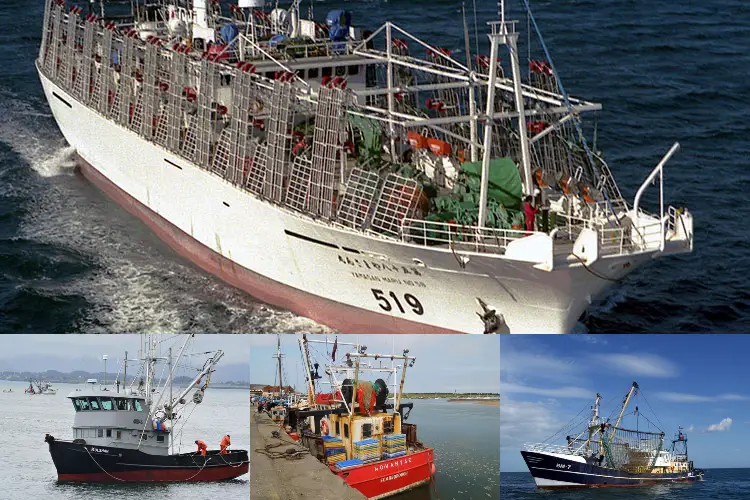

![Straddle Carriers [ULTIMATE GUIDE] 13 Straddle Carriers [ULTIMATE GUIDE]](https://www.maritimemanual.com/wp-content/uploads/2021/07/straddle_carrier.jpg)
